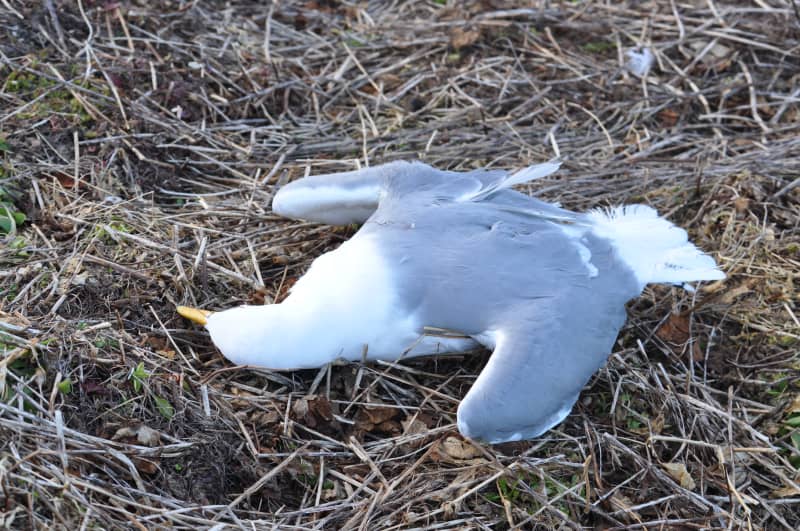Bird flu hit Finland last year on an unprecedented scale. This year, the number of cases has been lower, but the disease has been detected all year round.

As the coronavirus pandemic continues, virus researchers have already begun to prepare for future pandemics.
Perhaps the biggest threat is considered to be avian flu.
As the name suggests, the virus is easily transmitted to birds and has killed scores of birds across Europe in the last couple of years.
The disease reached Finland in 2016, after which a quiet period followed, when no infections were found. Last year it spread almost like wildfire. The Food Agency investigating bird flu recorded more than 60 cases.
One case may mean one dead bird, but also the mass death of hundreds, even thousands of birds. This was, for example, the only bird flu infection found on a poultry farm – thousands of dead pheasants were left in its wake. Otherwise, bird flu spread among wild birds.
This year, there have been clearly fewer bird flu cases than last year, a total of 24. Still, the number is large if you compare it to previous years, when there were only a few cases.

Last year’s high infection rates are probably explained by migratory birds. There is now a lot of bird flu in Europe, and it has also been carried to Finland along with migratory birds. That’s why it’s a bit surprising that there hasn’t been much of a seasonal change this year.
– Sure, there were a little more frequent cases in the spring, but bird flu has been observed all year round. So it is not related to migratory birds.
The exact reason for the lack of seasonal variation is not known, but it seems that the disease has been circulating in the birds that live permanently here.
The most recent case is a sea eagle found in Pudasjärvi that died of bird flu. Most likely it was infected by a sick bird of prey. According to Sirpa Kiviruusu, the fact that bird flu was found in a sea eagle is a sign that the disease is at least somewhat present in other birds.
– We don’t get all sick birds here at the Food Agency for examination, but only those that people notice and send to us. Large birds of prey picking off sick birds indicate that the disease is also present in other birds.
Virus type spreading in Europe is not dangerous for humans
Virus researchers are particularly closely monitoring the transformation of the bird flu virus and its ability to infect mammals. There is a particular fear that the disease will start to spread among people.
Individual human infections have already been found. According to the World Health Organization, a total of 865 people in 20 different countries have fallen ill with the disease. So far, the virus has not spread widely from person to person. The disease has also been dangerous for humans, as more than half of those affected have died.
In particular, the H5N1 type virus caused several deaths in the early 2000s. Most of the viruses now found in Finland are of the H5N1 type of the same name. According to Sirpa Kiviruusu, however, it is a different virus.
– The letters H and N are surface proteins used to type viruses. However, the virus has many other characteristics that distinguish them. The H5N1 virus found here is indeed a different virus than the one circulating in Asia at the beginning of the 21st century, explains Sirpa Kiviruusu.

The bird flu spreading in Finland is contagious and dangerous for birds, but not for humans.
– All the viruses found here are highly pathogenic, meaning they easily infect birds. As a virus, on the other hand, they are not very difficult, because the virus can be eradicated from the poultry farm quite quickly with cleaning and disinfection measures.
The virus has also been found in a few mammals.
– One lynx and one otter carrying the bird flu virus have been found in Finland this year. They probably ate sick birds.
In Europe, the disease has also infected humans this year. In Britain, a poultry farmer got infected from a sick bird on his farm. However, the disease was asymptomatic.
– The virus forms that have spread in Europe have been harmless to humans. In order for the virus to have caught on, a large amount of virus and close and long-term exposure are required, just like what happened in Britain.
However, influenza viruses are capable of transformation. For this reason, the Food Agency is closely monitoring the bird flu situation.
So far, the virus has caused headaches for poultry farms. According to the Food Agency, the protection of premises is now particularly important..
– The feed must be protected, and nothing outside, for example mice, rats or birds, must be allowed in. Things are well taken care of at commercial farms, but there can be problems with backyard sewers, says unit manager Sirpa Kiviruusu from the Food Agency.
